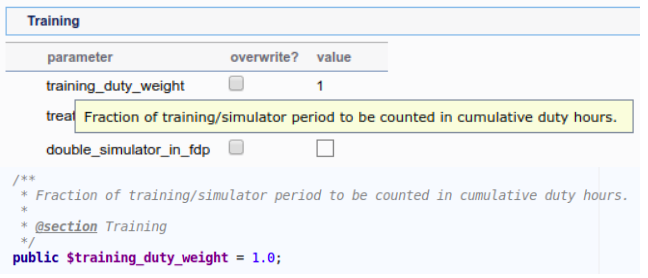Leon FTL Engine: Where the magic happens
Thousands of pages in our customers’ Operations Manuals, written in a specific language of international aviation, which isn’t always as precise as it should be, consisting of a multitude of various FDP limits and extensions, rest reductions, augmented and double crew regulations, unforeseen circumstances and cumulative block time limits. How can you make sense of it all? You can’t… unless you have a reliable and fully customizable FTL module.

Leon FTL engine
As we have mentioned in our previous review on customization in Leon, we put special care into developing our FTL engine, which is used by roughly two hundred of our customers both in day-to-day operations as well as for their internal and external audit procedures. For greater reliability, our FTL calculations are managed by an autonomous software module, only loosely connected to the main part of Leon.
The input…
You can catch a glimpse of the complexity and versatility of this system in the “FTL Settings” view, where hundreds of different switches and values reflect all the details of FTL calculations for a given AOC. Not all switches are visible at first sight, though—many of them serve as a refinement for other options and are displayed only if needed.
In order to close the loop between our customers and our engineers, the names and descriptions of the FTL settings are generated directly from the source code and therefore are seen in the exact same way by our developers and support staff. Thanks to this, a majority of FTL-related inquiries from our customers can be successfully dealt with by our support staff, thus significantly reducing the response delay.

… the output…
However, at the other end of a user interface, we need all the calculated durations, limits and violations to be displayed in a consistent and uniform way for all our customers. As a matter of fact, FTL reports are always generated in the same clear and concise format, regardless of the complexity of underlying regulations. This increases the credibility of Leon as an FTL compliance system, recognized by a number of supervisory authorities.
… and what lies between
In the middle between these two worlds lies the FTL engine, performing the calculations according to the operator’s settings, based on the variety of flight information, filled both in the flight preparation stage as well as post-flight. This part of Leon has been thoroughly tested and perfected over the years, and in its current state, it can be easily tailored for the requirements of particular AOCs. The important part of the FTL engine is an automatic control system for the logic of FTL calculations. In a nutshell: programmers implement the logic behind FTL as independent parts of code whilst our automatic system analyses this code and determines the proper order of performing calculations, generating additional higher-level source code on its own. By this novel meta-programming technique, we can automatically make sure that there are neither logical errors nor inconsistencies in the implemented FTL rules as a whole.
Supported features
All in all, our FTL system supports:
• custom reporting times,
• rules for max FDP and FDP extensions,
• rules for minimum rest and rest reductions,
• extended rest periods (e.g. 36 h),
• single and double days off,
• cumulative limits (flight, block and duty time),
• rules for augmented and double crew,
• several different types of acclimatisation,
• fully customizable split duty,
• standby & reserve duties,
• … and many other specific cases, designed to work flawlessly with one another.
Also, do you know that…
• While the crew members’ activities are automatically arranged into (flight) duty periods based on the user-defined threshold, this grouping can be easily overridden directly from the FTL tab in the flight editing view.
• Since recently, FTL can also be calculated in “draft mode” available on the new Crew Panel. Thanks to this new feature, FTL compliance, as well as short- and long-range limits and possible violations can be previewed even before the roster is published.
• You can define multiple FTL settings and assign them to different aircraft. Moreover, each crew member may be assigned a specific set of rules to be used for all their non-flight activities. Finally, each leg can be assigned a specific AOC as well, making our FTL system a good fit even for the most complicated schedules.
Don’t forget to visit our Community, where our developers share their know-how on FTLs and other features of Leon.
TAGGED WITH




